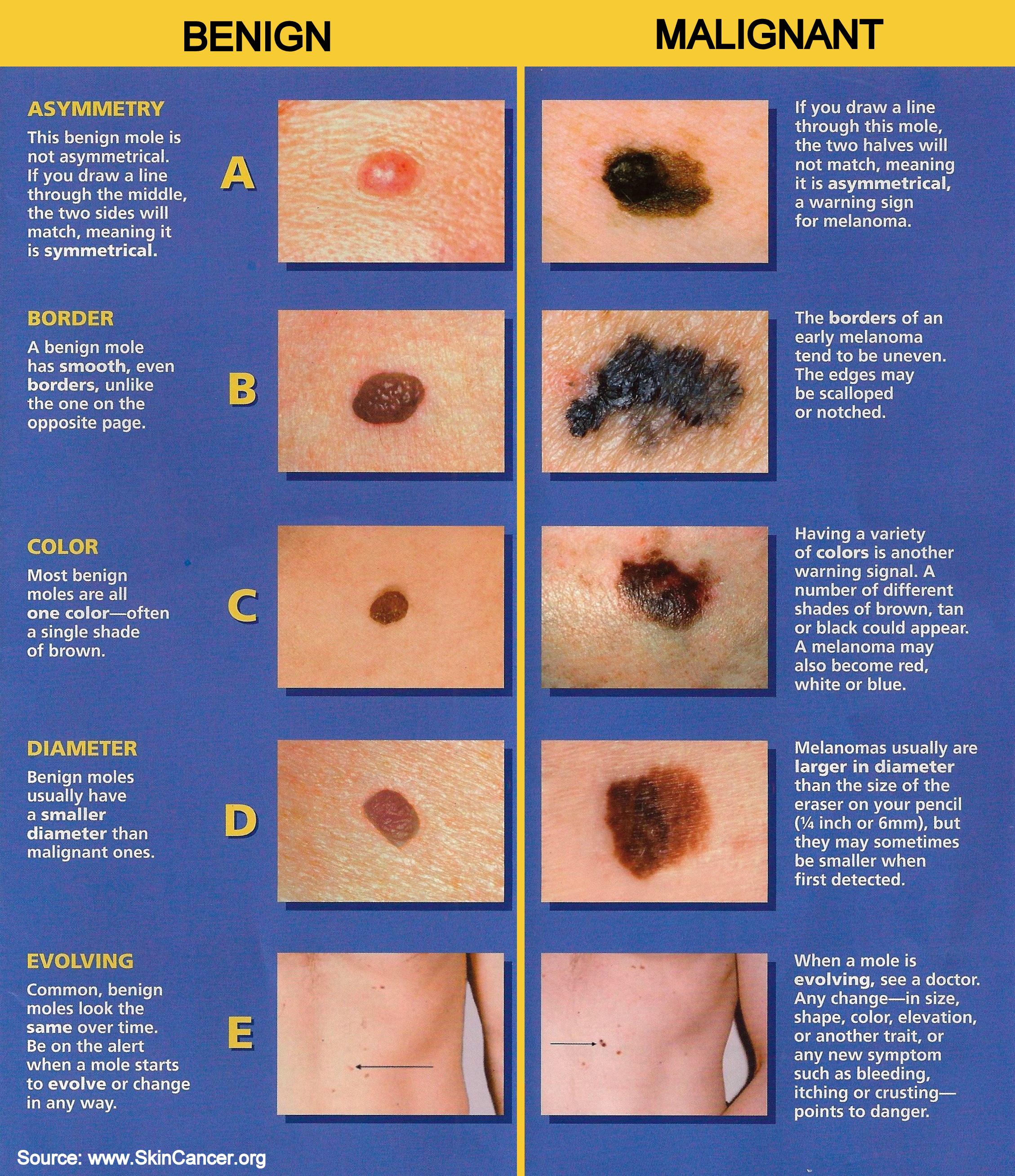


Tumor: A lesion that is larger than 0.5 centimeter (0.2 inch) in size but looks similar to a nodule.Telangiectasia: Clusters of "spider veins" where tiny blood vessels cause red lines on the skin.

Nodule: A circular, elevated, solid bump greater than 0.5 centimeter (0.2 inch) in size.Pustule: Similar to a vesicle but filled with pus instead of fluid.Vesicle: A fluid-filled blister less than 0.5 centimeter (0.2 inch) in size.Plaque: A lesion that is raised like a papule and is greater than 1-2 centimeter (0.4 to 0.8 inch) in size.Patch: A flat lesion that is different in color and greater than 0.5 centimeter (0.2 inch) in size.Papule or maculopapular: An elevated solid lesion, up to 0.5 centimeter (0.2 inch) in size.Macule: A flat lesion that is different in color, and less than 0.5 centimeter (0.2 inch) in size.Cyst: A raised area of the skin that has clear borders and is filled with fluid or semi-solid fluid.Bulla: A vesicle that is more than 0.5 centimeters (0.2 inch) and is filled with fluid.Flat lesions: Examples include patches and macules.Lesions that are solid masses: Examples include nodules and tumors.Lesions formed by fluid within the skin layers: Examples include vesicles and pustules.Primary skin lesions tend to be divided into three groups: This can happen when a primary skin lesion is:įor example, if eczema is scratched, a crust may form. Secondary skin lesions arise from primary skin lesions. If it causes irritation or embarrassment due to its location, it is possible to have it removed through a simple and relatively painless procedure.Skin lesions are either primary or secondary. Primary skin lesions are either present from birth or develop during your lifetime. It is important to have a skin tag evaluated by a physician if is begins to bleed on its own or when squeezed, changes color or shape, becomes painful or inflamed, or is larger than a pencil eraser. In general it is rare that cancer cells would be found in a skin tag, but it is possible that some forms of cancerous tumors may take on the appearance of one. If it is large, bleeds or appears suspicious to the physician who removed it, it is more likely to be sent to a lab for analysis. When a skin tag is removed, however, it may be reviewed by a pathologist to make sure that no abnormalities are present. Since a skin tag is considered a harmless growth, it is not associated with cancer even if it is never treated and is left to remain on the skin. Only one treatment is needed for each skin tag, but if new ones develop, future treatment of the new growths may be needed. Lasers often are used as they are considered fast and painless and only leave very minimal scarring if any, which is particularly preferable when removing a skin tag from the face. Removal is a simple procedure that involves using a local anesthetic to numb the area before freezing or cutting them. The decision to remove a skin tag is generally based on the level of irritation that they cause or for cosmetic reasons if they are located in a prominent place, particularly on the face or neck. Most stay relatively small, but it is possible for them to grow to about the size of a grape. It is made up of a core that contains nerve and fat cells, ducts, and an outer skin covering. When a skin tag first develops, it may be incredibly small, about the size of a flat, pinhead sized growth. While they also are associated with certain health conditions such as diabetes and human papilloma virus (HPV), skin tags can occur in anyone during any time of life including childhood. Most often arising in adulthood, particularly during middle age, skin tags are more prevalent in people who are overweight or pregnant, the latter due to increased hormone production. With most of the population experiencing skin tags at one point during their lives, a common question is whether or not these growths are indicative of cancer. Most people develop at least one skin tag during the course of their lives, generally on the neck, eyelids, armpits, and areas with skin folds, but sometimes they go unnoticed until they are irritated repeatedly by shaving or rubbing against clothing or jewelry. Skin tags are a common condition of the skin and can be identified by their relatively small size, softness, and appearance as flesh-colored tissue that is raised from the surrounding skin by way of a small stalk.


 0 kommentar(er)
0 kommentar(er)
